#plastic surgery
Text
Furries took over the world and they came up with a new type of plastic surgery to become their fursonas and it was called a “furgery”.
#dream#text#November 13th 2023#furry#furries#surgery#plastic surgery#fursona#queueueueueueueueueueueueueue
2K notes
·
View notes
Text
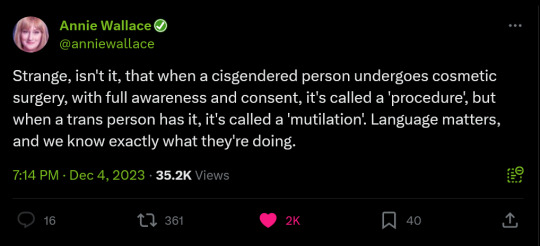
#cosmetics#top surgery#plastic surgery#lgbtqia#lgbtq#lgbtq community#lgbt pride#queer#lesbian#nonbinary#sapphic#gay girls#nonbinary lesbian#transgender#transfem#trans#transfemme#transsexual#trans women
2K notes
·
View notes
Text
Honestly when I hear people say “not receiving gender affirming surgeries will make me feel suicidal” I hear the same thing as if someone said “if I don’t get a nose job I’ll feel suicidal”
It’s a physical insecurity that wouldn’t exist in a vacuum. I’m sorry that you were influenced to feel this way, but surgery will not fix something that is rooted in self-hatred. If you change it with surgery, you will find another insecurity to fixate on within a week.
Also, can we talk about how rebranding gender affirming surgery as some life-saving procedure is just promoting and glamorising a very misogynistic and corrupt industry.
#normalise calling gender affirming surgery plastic surgery#because thats what it is#radblr#radical feminism#radical feminist safe#radical feminists do interact#gender critical#radical feminist community#gender abolition#terfsafe#terfblr#anti cosmetic surgery#plastic surgery
1K notes
·
View notes
Text
I think buccal fat removal in a young person is a great way to create a returning customer. It’s like adding planned obsolescence into a face. Without the support of this fat, your face and jowls will sag and your face will (according to your plastic surgeon and your insta friends and your shitty woman hating boyfriend) NEED more surgeries.
Making an adjustment to someone’s face (for money) that will all but guarantee this person’s cascading self-esteem and “need” for more plastic surgeries (for money) is just doctors being hip to capitalism.
Elective plastic surgery will always be a tool of capitalism, because the most resellable commodity is always your dream self. They create more false standards of femininity, they charge you to meet them, then they change them, then they charge you to meet them again.
But don’t worry! Capitalism also teaches Market Segmentation. You know, how they figured out that aggressively gendering toys and selling separate fantasies to male and female children resulted in greater revenue?
Huh, I wonder how you create market segmentation when it comes to profiting off of bodies? Oh of course, you create new identities with new surgeries and new clothes and new makeup looks and new hair products and pins, and suddenly you have a whole new market.
You know ow what private medical practice is like, right? You have to drum up patients somehow! You can see them on TikTok, telling us which celebrities would look “better” with which products, telling us which random person in a video would look “better” with thousands of dollars worth of medical treatment.
And people die!! Under the knife or from infections, these are REAL surgeries. Can you imagine wiping out the rest of your life because some man said you had chubby cheeks? Because somebody told you your breasts were wrong? Because your thighs committed the sin of touching? You really want to meet your ancestors because the vibes were off on your boobs???
None of us are immune to propaganda. But we can try our hardest not to constantly consume it!! Find women you know and look for their histories in their faces. Romanticize everything that makes you unique. REJECT THE NOTION THAT FACES AND BODIES CAN GO OUT OF FASHION. That is just some male garbage made up to steal our fucking money, time, and energy.
Plastic surgery is about fear of life and of ourselves.
720 notes
·
View notes
Text

Be Born Again, Dr. Kim
13K notes
·
View notes
Text
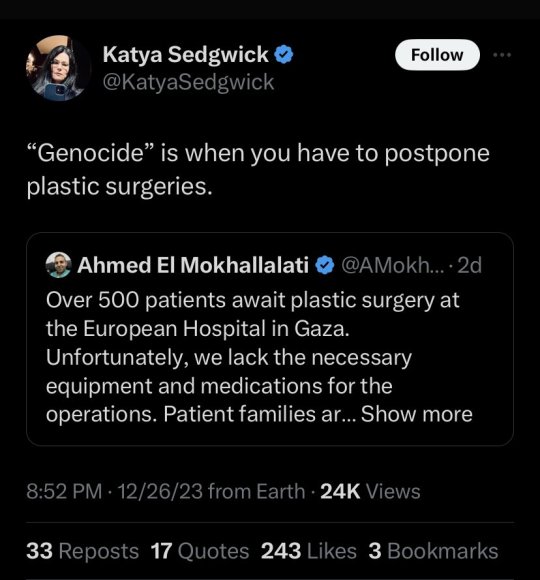


She literally can’t comprehend that plastic surgery is often for more than silicone implants or lip fillers.
986 notes
·
View notes
Text

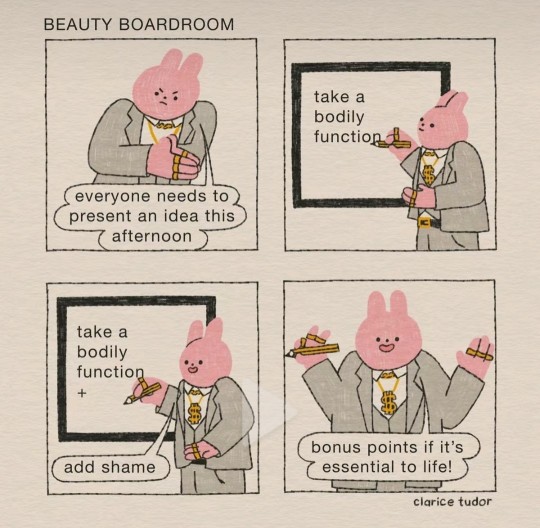
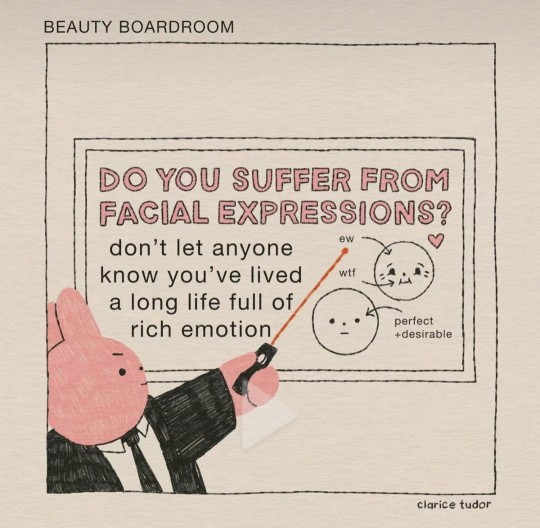


#radblr#anti beauty standards#anti beauty industry#fuck your beauty standards#plastic surgery#anti plastic surgery#radical feminism#radical feminists please interact#anti beauty culture
462 notes
·
View notes
Text

Gorgeous 💙💜
403 notes
·
View notes
Text

113 notes
·
View notes
Text

PLASTIC RECONSTRUCTION OF FACE [1918]
#GIF EDIT#gif#film#surreal#silent film#short film#black and white#monochrome#plastic surgery#10s#educational#u#FAVE
86 notes
·
View notes
Text
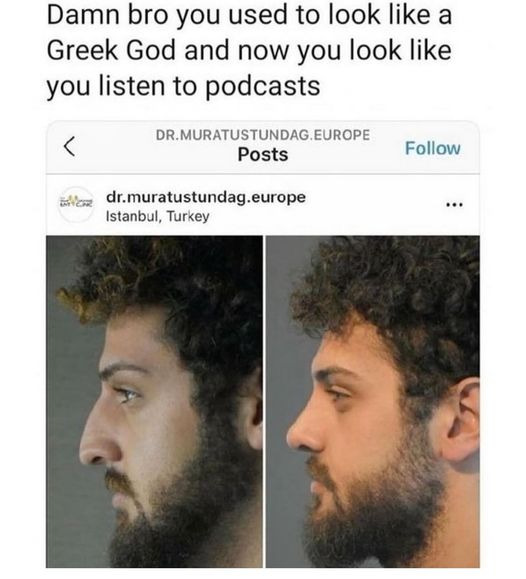
Noble Roman nose to cute pug nose. Hmmmm. If you're a Darcey & Stacey fan, remember how the twins spent months in Turkey getting plastic surgery and new teeth, b/c it's less expensive than here in the states?
96 notes
·
View notes
Text
Rib removal surgery is one of the craziest plastic surgery procedures I’ve ever heard of

Removing your ribs for an hourglass figure is extreme and yet, the surgery seems to be gaining popularity.
#plastic surgery#rib removal surgery#radblr#radfem#radical feminism#radfem safe#radical feminist#radical feminists please interact#radical feminist safe#radfems please interact#beauty industry
426 notes
·
View notes
Text
57 notes
·
View notes
Text
i just will never get over how it's considered an industry standard for actresses to have cosmetic procedures that affect the way they are able to use and feel their faces. to see women who have full use of their expressions when younger and now do not is so shocking if you allow yourself to be shocked. having her facial muscles under her control was part of her hard-won skill set. and now she isn't into control of it anymore. she can't feel it. and for what?
#the first time I saw it was bird box Sandra bullock#plastic surgery#beauty industry#the most recent time that really shocked me was starlight in s2 of the boys#like it changed everything and I'm supposed to pretend nothing happened?
535 notes
·
View notes
Text
I'm in my teens and I am often told I need Botox or some kind of plastic surgery to get rid of my fine lines. I used to use drugs. I had an eating disorder. I smoke. I experience stress. I don't look old. I look like a teenager with a face completely appropriate considering my situation.
aging is a gift
#plastic surgery#anti beauty industry#anti beauty culture#anti beauty standards#radblr#radical feminism#radical feminists do interact#radical feminist safe#radical feminists do touch#terfblr#rad fem#anti plastic surgery#anti makeup#beauty culture#radical feminist#female socialization#sex based oppression
57 notes
·
View notes
Text
Between 1984 and 1986, the number of liposuction operations rose 78 percent—but the procedure barely worked. Liposuction removed only one to two pounds of fat, had no mitigating effect on the unseemly "dimpling" effect of cellulite, and, in fact, often made it worse. The procedure also could produce permanent bagginess in the skin and edema, just two of the "variations from the ideal" that the plastic surgery society cataloged in its own report. Another "variation" on the list: "pain."
Furthermore, the plastic surgery society's survey of its members turned up several other unfortunate incidents. A liposuction patient lay down to have stomach fat removed and woke up with a perforated bowel and fecal matter leaking through the abdominal cavity. Three patients developed pulmonary infections and two had massive infections. Three suffered pulmonary fat embolism syndrome, a life-threatening condition in which fat can lodge in the heart, lungs, and eyes. And "numerous patients" required, as the survey delicately put it, "unplanned transfusions." On March 30, 1987, Patsy Howell died of massive infections three days after a liposuction operation performed by Dr. Hugo Ramirez, a gynecologist who ran a plastic surgery clinic in Pasadena, Texas. The same day Howell had her operation, Ramirez performed liposuction on Patricia Rogers; she also developed massive infections, was hospitalized in critical condition, and eventually had to have all her skin from below her chest to the top of her thighs removed.
Howell, a thirty-nine-year-old floral shop manager and the mother of two sons, submitted to liposuction to remove a small paunch on her five-foot-one frame. She weighed only 120 pounds. “This literature she got at a shopping mall said the procedure was so simple,” her friend Rheba Downey told a reporter. “She said, ‘Why not?’” She made up her mind after reading Ramirez's newspaper ad, calling the surgery "the revolutionary technique for reduction of fat without dieting." No one told her about the dangers. Ramirez operated on more than two hundred women, causing numerous injuries and two deaths before his license was finally revoked.
By 1987, only five years after the fat-scraping technique was introduced in the United States, the plastic surgery society had counted eleven deaths from liposuction. A 1988 congressional subcommittee placed the death toll at twenty. And the figure is probably higher, because patients' families are often reluctant to report that the cause of death is this "vanity" procedure. A woman in San Francisco, for example, who was not on the surgery society's or Congress's list, died in 1989 from an infection caused by liposuction to her stomach; the infection spread to her brain, her lungs collapsed, and she finally had a massive stroke. But her family was too ashamed about the procedure to bring it to public attention.
The society's 1987 report on liposuction, however, seemed less concerned with safety than with "the reputation of suction lipectomy," which its authors feared had been "marred by avoidable deaths and preventable complications." It concluded that all problems with liposuction could be easily solved with "guidelines governing who is permitted to perform and advertise surgical procedures." In other words, just get rid of the gynecologists and dermatologists and leave the surgery to them.
Yet some of the liposuction patients had died at the hands of plastic surgeons. And the most common cause of death was the release of fat emboli into the heart, lungs, and brain—a risk whenever inner layers of epidermis are scraped, no matter how proficient the scraper. As even the report acknowledged: "[Liposuction] is by its nature a tissue-crush phenomenon. Therefore, fat embolism is a realistic possibility."
Surgeons also marketed the injection of liquid silicone straight into the face. Vogue described it this way: "Plastic surgery used to be a dramatic process, but new techniques now allow doctors to make smaller, sculptural facial changes." This "new" technique was actually an old practice that had been used by doctors in the last backlash era to expand breasts—and abandoned as too dangerous. It was no better the second time around; thousands of women who tried it developed severe facial pain, numbing, ulcerations, and hideous deformities. One Los Angeles plastic surgeon, Dr. Jack Startz, devastated the faces of hundreds of the two thousand women he injected with liquid silicone. He later committed suicide.
For the most part, these doctors were not operating on women who might actually benefit from plastic surgery. In fact, the number of reconstructive operations to aid burn victims and breast cancer patients declined in the late '80s. For many plastic surgeons, helping to boost women's self-esteem wasn't the main appeal of their profession. Despite the ads, the doctors were less interested in improving their patients' sense of "control" than they were in improving their own control over their patients. "To me," said plastic surgeon Kurt Wagner, who operated on his wife's physique nine times, "surgery is like being in the arena where decisions are made and no one can tell me what to do." Women under anesthesia don't talk back.
-Susan Faludi, Backlash: the Undeclared War Against American Women
93 notes
·
View notes